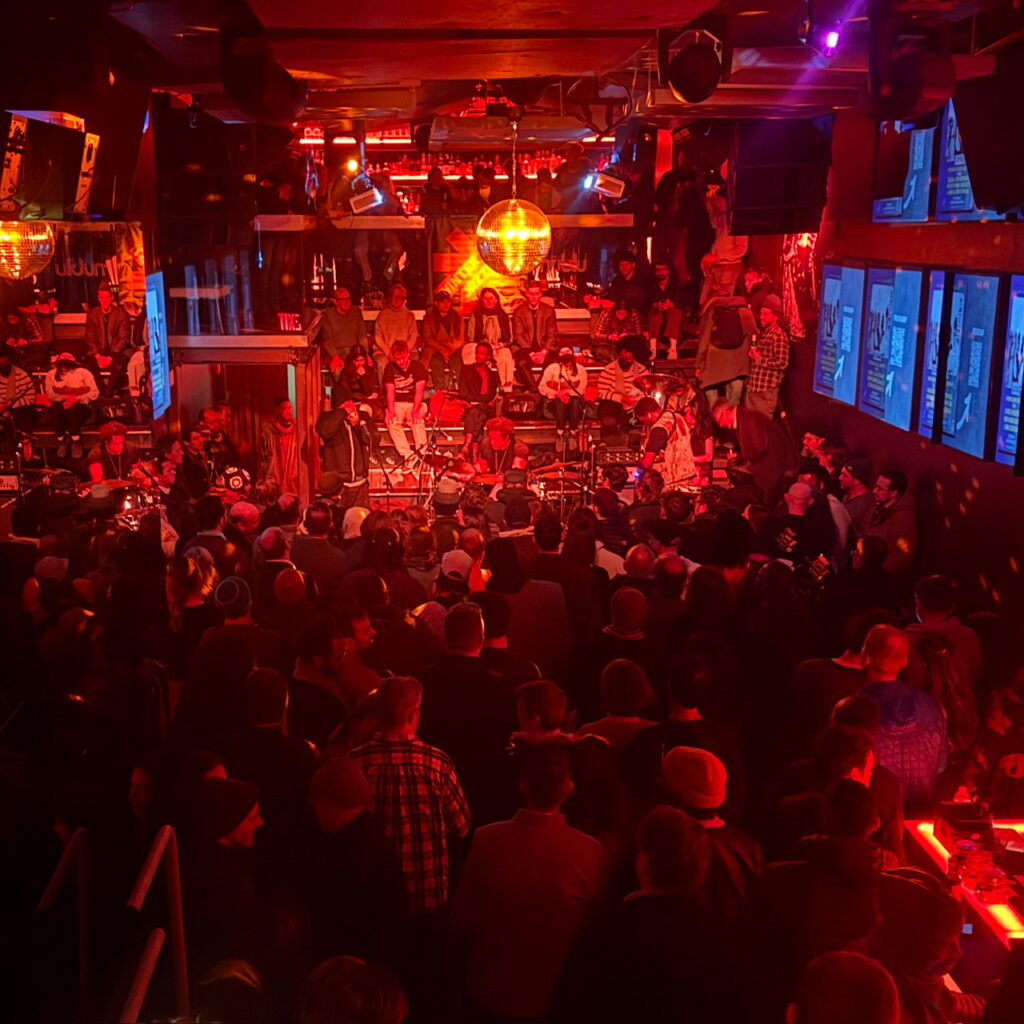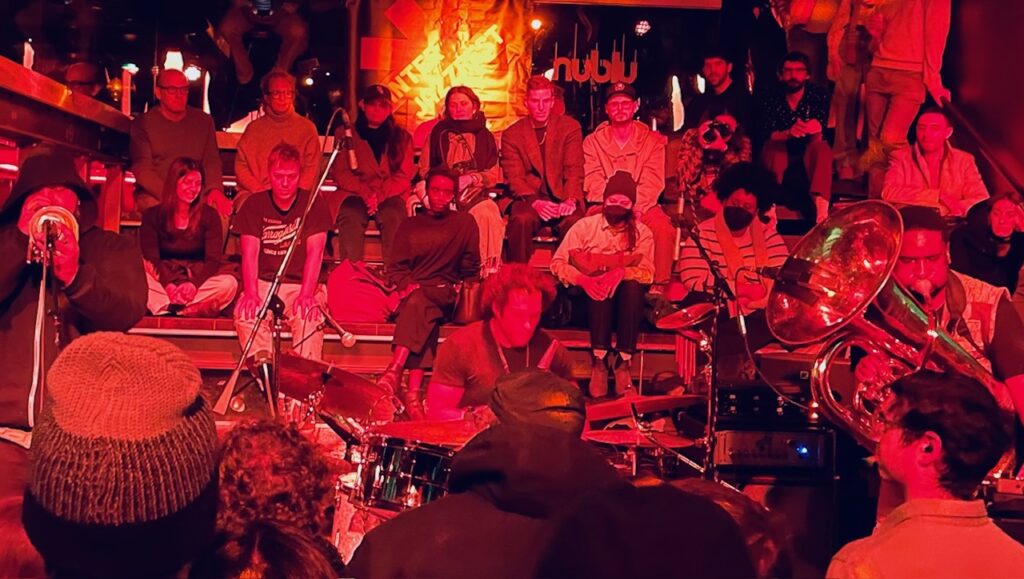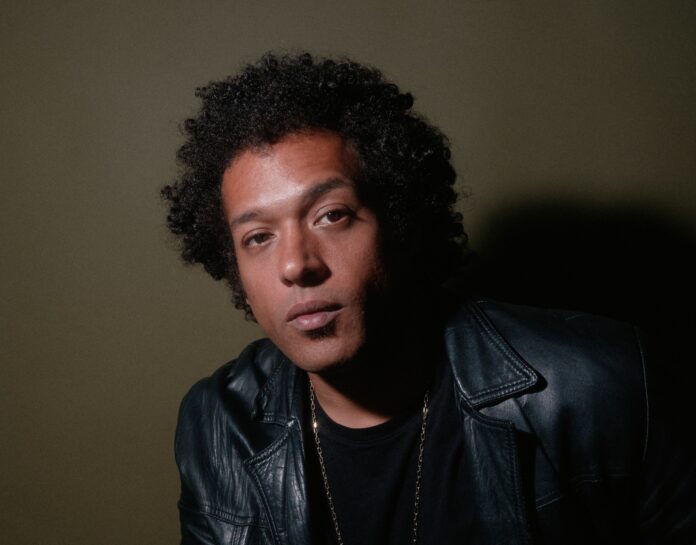21 degrees said the cell phone, but I think it was frozen. Felt like 4.
In January, New York City is another type of cold that some folks don’t know about. Yet jazz-lovers are a different breed, ready to bring the heat. At 11:15 p.m. on Avenue C in the East Village, on a Thursday night no less, there is a line around the corner in this Arctic air, running back up the other side. The club in question, Nublu, the one everyone is freezing their butts off for, is known as one of the best jazz clubs on the planet. So even in this weather, with people in their ski jackets, boots, funny-looking warm hats, and no joking-around attitude, keep getting online.
That’s what a reputation can do for ya.
Founded in 2005, the New York City Winter Jazzfest has established itself as a January destination, months before tanning oil and beach rave locales pop up and snatch that worldwide digital travel coinage. A jazz festival, in the coldest month of the year, doesn’t just work; it dominates over a series of nights (January 9-15), sometimes totaling over 130 concerts, ripe with cultural exploration, showcasing innovative music from all over the world across New York City.
This year I was desperately trying to catch Brandee Younger, the native New Yorker, and this year’s SFJazz Resident Artistic Director. She was performing at the Keith Harring Theater on 1st Ave on this night. (She’ll be performing in March at SFJAZZ.) But I had been hyped on Winter Jazzfest since its 2018 watershed year, in which the new British vanguard put the world on notice.

That’s when tenor saxophonists Shabaka Hutchings and Nubya Garcia, presented with the BBC along with global tastemaker DJ Gilles Peterson, collectively rewired some things in America’s classical music. With Kamasi Washington, Robert Glasper, and other US upstarts on one side and the New Jack Brits on the other, this genre had a rebirth, an infusion of ideas that ranged from hip-hop to soundsystem culture, easing the tradition into young and able-bodied hands.
That’s why I was out here, cursing at the sight of my breath.
“They used to call this Alphabet City, a place nobody wanted to be at back in the day,” I was reminded by a former New Yorker named Mark, waiting in line, donning that bushy Sam Elliott stache. He was visiting his daughter and granddaughter in Queens and currently lives in D.C. My new friend decided to take in a show while showcasing strong and time-wise parenting skills. He was on the clock for babysitting the next morning at 7:30 am.
Respect.
Makaya McCraven, the Chicago-based drummer, composer, and producer, has been the artist-in-residence at the 2025 NYC Winter Jazz Festival. Throughout the seven-day event, he was scheduled to perform five shows at five venues in five unique combinations. I was able to witness one of them, and yeah, buddy, it was worth dealing with the elements.
With horn connoisseur and fellow International Anthem label-mate Ben LaMar Gay and musician and UK composer Theon Cross—a tuba player who crafts basslines reserved for drill, drum and bass, and other forms of low-end music—this trio silenced a sold-out crowd of aficionados through most of the set.
Sparse cameras, including my own, went off to catch snaps, but they, excuse me, we were here for the listening. Folks were not chatting about “Was that W. Kamau Bell winning on Celebrity Jeopardy” while these artists performed. No. None of those SF tendencies here. It’s very cool about Kamau, salute to you Brother, but this is not the time.
New Yorkers, honor their damn jazz.
With Ben LaMar Gay kicking off the performance with vocalizations, in and out of a tambourine, McCraven brushing wind chimes and bells, and Cross hitting those low notes as if bullfrogs were communicating across this swampy soundscape: The opening, for a couple of minutes, delivered boggy marshland outdoor topography.
The tempos picked up and we hit marching velocity, Gay wailing out a lyrical tapestry in spurts with his trumpet, then playing a conch shell, using this exoskeleton as it’s been repurposed for thousands of years, a means of signaling warfare or religious ceremonies. Meanwhile McCraven and Cross took part in hot potato with the rhythm, pulling and pushing friction, with the tuba hitting that second line tradition, then bottoming out on lower register frequencies, bringing cheers from the crowd.

McCraven boxed out for interspersed solos on the drums, conjuring up arrangements and visions of Elvin Jones just going off. A fraction of a tip of his drumstick flies off behind him and not one patron in the back row quivers, everyone is transfixed. McCraven’s rhythm attack danced around the ghost notes, with Misty Copeland’s grace and MJ’s moonwalking bravado. My bushy-stashed friend Mark asks me about the show, “Do you think that was 80 or 100 percent improvised?” I have no idea; I don’t have song titles, I just have this long one-take tale/performance that feels like it was written by the ancestors and passed down to these contemporary interpreters for a new generation to witness. These are the things jazz can still do. I walked back from the show, cooled off. Amazed. Not even thinking of hitting McSorley’s Old Ale House as I pass it, for a final pint.
My mind is blown.
The next night I caught just a snippet of Younger’s Trio at The Keith Haring Theater, and while it was brief, that harp mastery by Brandee Younger is for sure a certified thing. While chatted with friends afterwards, and the venue took a brief pause, I did not put together that the older Black gentleman who had ridden the elevator up with me to the performance space was the same gentleman getting ready to perform next.
It was free-jazz trumpeter Wadada Leo Smith, being announced for his set with pianist Vijay Iyer. (I’m reminded that in New York City, you can find yourself on an elevator with anyone.) As the duo traversed the highly difficult and chilling worlds of ambient frigidity that would eventually touch down into earthly, more stable tones, I was locked into the thought that Smith is probably playing something now, at whatever advanced age he is, that he could not even touch 40 years previous. That is the magic of dedicated craftsmanship.





